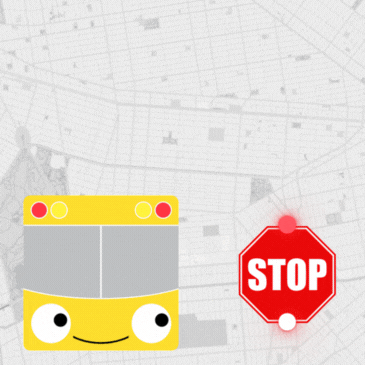
Here’s My Story: The Man Who Flew Over Mount Sinai
Mordechai Gorelik
Click here for a PDF version of this edition of Here’s My Story, or visit the My Encounter Blog.
I was born in 1944 in Samarkand, Uzbekistan. We managed to maintain a chasidic way of life and to observe every detail of Jewish law, despite the many difficulties we faced in the Soviet Union. The school system made keeping Shabbat particularly difficult and my father spent several years in Siberian exile, on account of his role in helping Chabad chasidim smuggle across the border. When I came of age, to avoid the additional challenges of military service, it was decided that I would instead attend university, and since an artistic streak ran in our family, I studied architecture.
About three years after I completed my studies and got married, in 1971, the government granted us exit visas. My wife and I left for Israel, where I eventually found a job working as an architect for the Ashkelon municipality.
In 1975, a little over a year after the Yom Kippur War, a request came from the Ministry of Defense to the municipality. In Ashkelon there lived the widow of an air squadron commander who had fallen in Sinai during the war, leaving her with four small children. The ministry had allocated funds to expand her small single-story home and asked us to assist with planning and construction.
While working on the project, I frequently met with this widow, an extraordinary woman who was dealing heroically with a very difficult situation. Among other things, she told me that her husband had been an avid photographer, taking pictures whenever he could. The Phantom fighter jets then used by the Israeli Air Force had no cameras, so he would take photos from the cockpit. Some of his photographs adorned the walls of her living room, but some two-thousand of them were in storage.
Interestingly, the Israeli army used some of those photographs in planning “Operation Thunderbolt,” the 1976 rescue of the passengers of an Air France flight that had been hijacked to Entebbe, Uganda. When Uganda was still friendly with Israel, the family had spent four years there while the husband trained local air force pilots, and he also took many photos of the very airport where the hostages were later held.
After the extension on her home was completed, we stayed in touch, and I would often speak to her about the Rebbe. Before the Tishrei holidays of 1977, I mentioned that my wife, our infant daughter, and I would be spending the month with the Rebbe. Something struck a chord within her and she immediately said, “I want to write a New Year’s greeting to the Rebbe. The children will write too. We love him and want to send a gift.”
The gift she chose was one of the photographs from her living room. While flying over the Sinai desert, her late husband had taken the photograph of a mountain claimed by some scholars to be Mount Sinai. I came to her house, and she gave me the picture, beautifully wrapped, together with her letter and the heartfelt letters and drawings her children had made for the Rebbe.
On arriving at 770, I delivered the package, and every few days I would check with Rabbi Binyomin Klein, one of the Rebbe’s secretaries, whether the Rebbe had replied. But Rosh Hashanah, Yom Kippur, and Sukkot all came and went and there was still no response. Then, on Simchat Torah, the Rebbe suffered a severe heart attack. As a result, I stopped asking for a response, of course, and we didn’t have a private audience with the Rebbe before returning to Israel.
So I returned home without an answer, and since I had nothing for the widow, I didn’t rush to call her.
One day, the phone rang in my office. “Mordechai, come here right now,” I heard her say urgently. Sensing the emotion in her voice, I asked what had happened, but she only repeated: “Come now!”
When I arrived at her home, I found her with red eyes from tears. “Mordechai,” she reported excitedly, “we just received five letters from the Rebbe! One for me, and one for each of the children.” She had three daughters and a son, who was only a baby when his father was killed.
“The Rebbe is a prophet like Moses!” she exclaimed. “There are things I never told anyone, only thought in my heart — and the Rebbe writes to me about them!”
In a long and remarkable letter, which was later published, the Rebbe encouraged her “to be strong in her trust in G-d, Who watches over each and every individual” and to take care of herself “both physically and spiritually.” He blessed her that “from now on you know no pain nor distress, G-d forbid, but only true Jewish nachas from each of your children, and that you raise them to Torah, marriage, and good deeds.”
What touched her most were the Rebbe’s words, written with extraordinary sensitivity and empathy, about the importance of getting remarried. Prefacing with a kind of apology, the Rebbe wrote: “Although this may seem an intrusion into a private matter… my feeling and sense of responsibility tells me not to withhold my thoughts.”
The Rebbe continued: “The pain and sorrow … of losing a husband and father of the family are clear and valid. Yet together with this, especially since G-d blessed you with children, which places upon you a sacred and pleasant mission — though at times a heavy one — regarding their education, it is also clear that you should try to arrange life in a normal manner, in all its aspects. I refer, simply put, to family life through marriage.
“Rather than, as many mistakenly think, hurting the soul of the beloved departed, the opposite is true: When the soul sees, from its place in the World of Truth, that the family life is being built in accordance with the Torah of Truth… this brings true satisfaction to the soul.”
The Rebbe acknowledged the “inner struggle, and not an easy one” in making such a step: “But surely G-d, who creates and guides man, does not abandon him even in a situation that requires extra effort and special strength, and before placing a person in such a situation, He gives them all the powers and abilities needed to overcome it.”
Regarding the children, the Rebbe added that “the younger they are when this is done, the easier it will be for them to adjust to a new presence in the home.” He mentioned that he knew of several similar cases, “and when the widow worked to arrange her life in this way, after a short time she recognized that this was the right path for the children, for herself, and beyond that — for a full and happy life.”
The Rebbe concluded his letter with his blessings for the new year. In a postscript, he thanked her for the “precious gift of the photograph taken by your late husband,” even suggesting that a public exhibition of his photo collection be arranged. Her husband’s photograph of the purported site of Mount Sinai, added the Rebbe, is one that “not only shows his aptitude for photography” but also reflect the choice of a subject that is of “heartfelt significance to every Jew — since all souls were present at Mount Sinai when the Torah was given.”
Mordechai Gorelik is an engineer and architect who resides in Nachalat Har Chabad, Israel. He was interviewed in his home in December of 2013.















